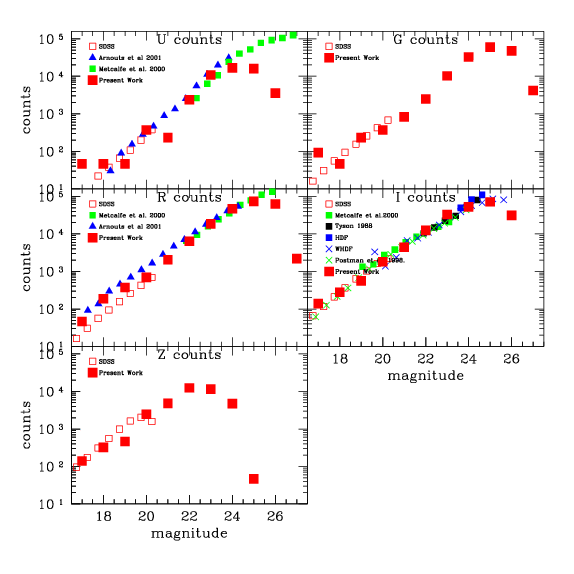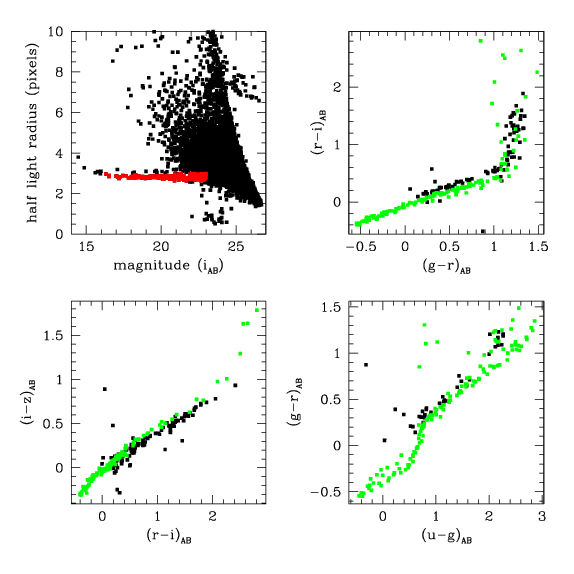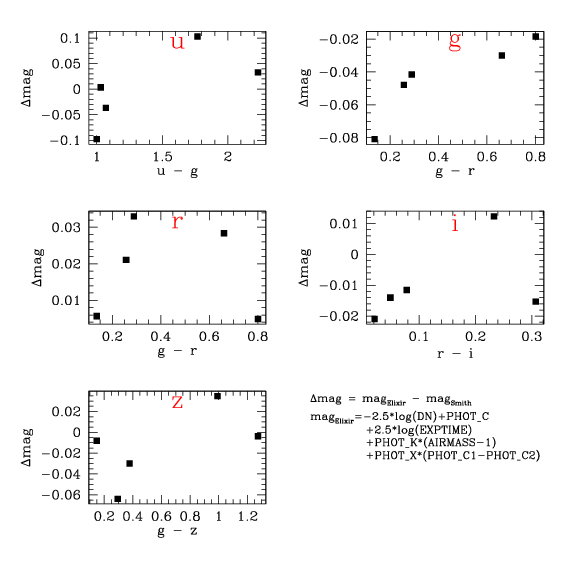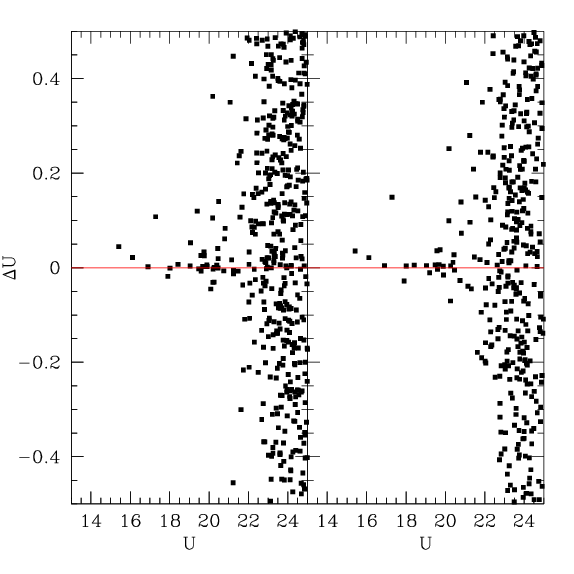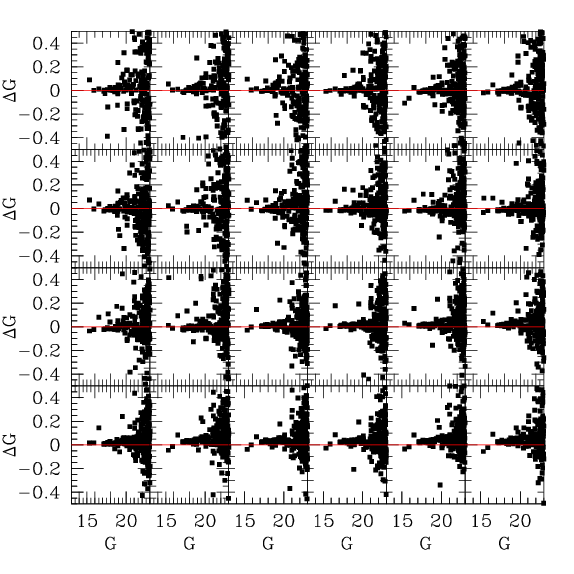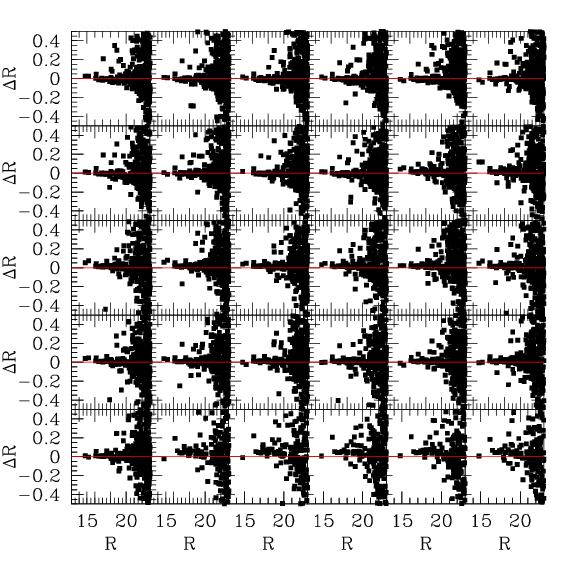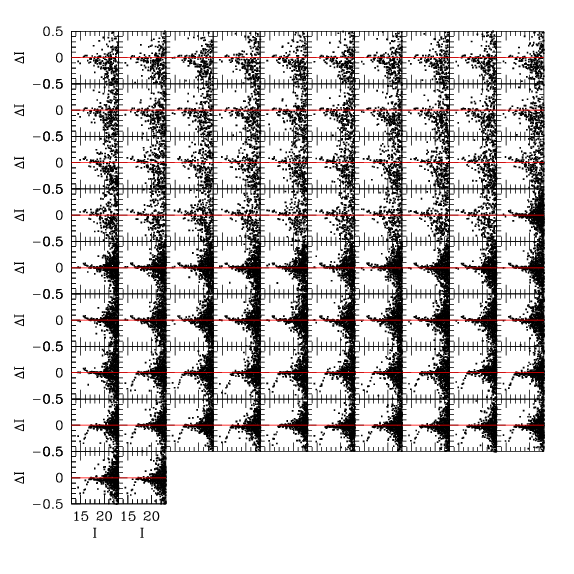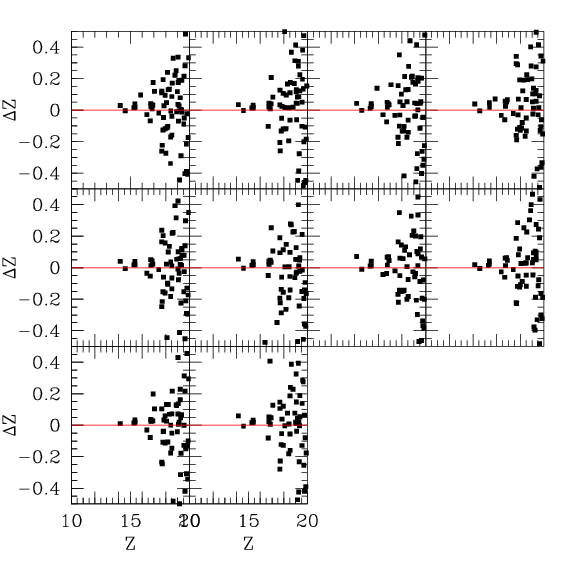|
The first release of Elixir-processed data occured on the 15th of January.
As a quick check on the quality/homogenity of the data,
and the AstroGwyn/PhotGwyn/SWarp pipeline, the I data for one
of the CCD's was examined and stacked.
The data were retreived from the CADC archive. For each multi-extension
FITS image, the CCD24 (extension 25) was extracted.
Most images are of high quality. A list of exceptions
can be found
here
Typical seeing is about 0.9 arcseconds. Fringing is invisible
in the I band and difficult to detect in Z.
The total number of usuable exposures and total
exposure times is given in the following table:
| Band | Number of
exposures | Total Exposure
Time (secs) |
|---|
| U | 2 | 1320 |
| G | 35 | 6300 |
| R | 64 | 14760 |
| I | 149 | 41780 |
| Z | 20 | 3600 |
The AstroGwyn astrometric calibration pipeline was then run on the
images. The first step is to run SExtractor on each image. The
parameters are set so as to extract only the most reliable objects (5
sigma detections in at least 5 pixels).
For the first band to be reduced (I) these image catalogs were
matched with the USNO A2 catalog to provide an initial astrometric
solution. Elixir provides an accurate 1st order solution. AstroGwyn
improves on this to provide an 2nd order solution with typical
residuals of 0.5 arcseconds with respect to the UNSO. In order to
register the images a internal astrometric catalog was generated by
cross-referencing the catalogs for all the individual images,
identifying objects common to multiple images, and averaging the
positions.
For the other bands, the image catalogs are first matched to the
USNO A2 to provide a rough WCS and then matched to a catalog generated
using the first image so as to precisely register the different bands.
The final astrometric calibration has an internal uncertainty of about
0.05 arcseconds and an external uncertainty of 0.3 arcseconds.
The PhotGwyn photometric calibration system takes the object catalog
from each image and cross-references them. For every pair of images,
the difference in measured magnitude for objects common to both images
is computed. The median difference of all these magnitude
differences gives photometric offset between the two images.
The Elixir headers give photometric calibrations based on
standard star observations during the observing run. These
calibrations are valid only under good observing conditions of
course. PhotGwyn plots the difference between the Elixir zero-point
and the zero-point derived from the offsets. When this difference
is large, this indicates the night the data was taken was not
photometric. Systematic changes over the night indicate a higher
than average extinction coefficient. PhotGwyn makes it possible
to identify images taken under photometric conditions and propagate
the photometric zero-point to images taken under non-photometric
conditions.
SWarp Written by
Emmanual Bertin of
Terapix combines the images, taking into account
the astrometric distortion corrections and the photometric calibration.
The results, a stacked images and weight maps,
are given here below. They are password protected.
The images are calibrated so that they have an AB zeropoint of
30. That is to say, for each image:
magAB=-2.5 * log10(flux in DU) + 30
This is based on the Elixir calibration (which may be slightly in
error, see below).
| 